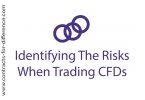While most ETFs are characterized by their size, diversity, and cost-effectiveness, the market for leveraged and inverse ETFs has grown significantly, amassing nearly $200 billion in assets.
Leveraged and inverse ETFs employ derivative instruments and margin loans to provide investors with amplified returns, often achieving multiples of the daily performance of the underlying index, or conversely, inversely tracking the index’s movements.
Notable instances include funds like TQQQ, a $20 billion triple-leveraged Nasdaq ETF; TMF, a Treasury bond ETF with threefold leverage amounting to $2.5 billion in assets, and SOXS, a $90 million ETF magnifying semiconductor share losses threefold. Additionally, there are even leveraged ETFs focused on individual companies. This diversity in the market has led to a dynamic landscape.
Leveraged ETFs can be risky, and here are the dangers explained in simple terms:
- Magnified Losses: Leveraged ETFs aim to amplify the returns of an underlying index or asset. However, this also means that if the index or asset goes down, your losses will be magnified. For example, a 2x leveraged ETF could potentially lose twice as much as the underlying index.
- Volatility: These ETFs are designed for short-term trading and can be extremely volatile. Daily returns can vary significantly, making them unsuitable for long-term investors who want stability.
- Compounding: Leveraged ETFs reset their leverage daily, which means that the compounding effect can work against you over time. This can lead to unexpected performance results, especially in periods of high volatility.
- Time Decay: Leveraged ETFs can lose value over time, even if the underlying index remains flat. This is due to the daily resetting of leverage, which can erode returns over extended holding periods.
- Not for Novice Investors: These investments are complex and not suitable for novice investors or those with a low risk tolerance. Understanding how they work and their potential risks is crucial.
- Market Timing: Successfully trading leveraged ETFs requires good market timing, as you need to buy and sell at the right moments to capitalize on their leverage. Mistimed trades can result in significant losses.
- Lack of Diversification: Leveraged ETFs typically focus on a specific sector or index, so they lack the diversification benefits of traditional ETFs. This makes them riskier if the underlying assets perform poorly.
Leveraged ETFs have the potential to erode returns over extended holding periods when the underlying index experiences volatility or fluctuates. This erosion can occur due to the daily resetting of leverage, where gains on some days might not fully compensate for losses on others, leading to a gradual decrease in the overall value of the investment over time.
To clarify further, the point is that leveraged ETFs are designed for short-term trading and may not effectively capture the intended leverage over extended periods. In some cases, investors might experience a decline in value even when the underlying index’s long-term performance remains relatively stable. The erosion of returns becomes more evident when the underlying index exhibits volatility and doesn’t consistently trend in one direction.
In summary, leveraged ETFs can offer the potential for higher returns but come with increased risk and complexity. They are best suited for experienced traders who can closely monitor their investments and understand the unique risks involved. For long-term investors or those seeking a safer approach, traditional, non-leveraged ETFs may be a more suitable choice.






